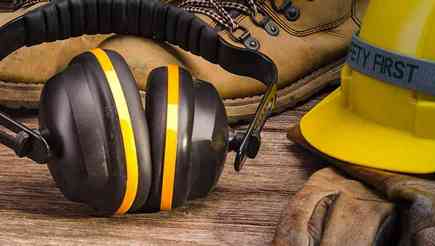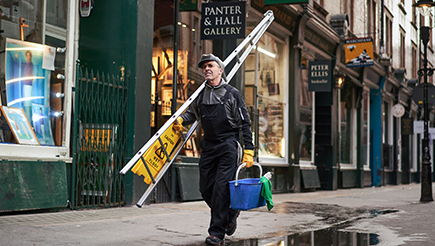The ILO’s (International Labour Organization) World Day for Safety and Health at Work returned on April 28th. Created as part of the UN’s 2030 Agenda for Sustainable Development, the day aims to increase awareness of safety at work and to help create a secure work environment for everyone.
This year the focus is on the importance of reliable data about work-place safety.
At first glance this may seem like more paperwork. However, all businesses must be aware of the big picture to prevent accidents, minimise risks and protect their company, and collecting accurate data is part of that.
Food and drink
Official bodies such as the Food Standards Agency provide detailed guidelines on how to ensure a safe and hygienic environment for food production. While it includes legal and best-practice rules about cleaning, storing common allergens and food preparation, much of their guide deals with staff training and keeping clear records. This is so that, should the worst happen, you can show that your business does everything it can to protect staff and customers.
Retail
Advice from the Health and Safety Executive focuses on slips and trips, manual handling, transport and violence in the workplace. To avoid dangerous incidents, your premises must be kept clean, tidy and well organised, and staff should respond quickly to spills. Training your team on the correct way to handle your products, deal with situations and engage with customers is essential for preventing accidents. Keeping records of cleaning schedules and safety procedures helps to remind staff how serious a simple oversight can be.
Manufacturing
There are, on average, 22 deaths and 3,100 serious injuries a year in the manufacturing sector, and ill health from workplace exposures is a major risk. Employers therefore need to be diligent when installing and training staff on new machinery and materials, and follow the appropriate legislation, which can vary by sector. External consultants can help if you’re unsure of which regulations apply to your business.
Building trades
Like manufacturers, builders and tradesmen are often handling heavy, dangerous materials and machinery. However, like retail or catering, they also come into contact with the public. Sites must be closely managed to protect the safety not only of contractors, but also people who pass through. Your business is liable for any injuries, and so tracking even small incidents is essential for knowing about all safety issues on site and preventing bigger problems in the future.
It’s vital that regular safety procedures are built into any workplace, but of course, some accidents are unavoidable.
The best way to protect your business from these risks before they happen is to ensure you have comprehensive public liability insurance that meets the specific needs of your business and through continual staff training.
According to the Health and Safety Executive (HSE), machinery accidents in the woodworking industry are more likely to cause injuries than slips and trips – highlighting a serious skills and training gap.
Outlined below are just some of the reasons proper health and safety training is essential to help protect your team and safeguard your revenue and here’s why.
It's the law
As well as standard Health and Safety at Work legislation, trade businesses are subject to The Provision and Use of Work Equipment Regulations 1998, which requires all workers to receive adequate health and safety training for each machine they operate.
Those found guilty in a magistrate’s court of health and safety offences can face a fine of up to £20,000 and up to 12 months in prison for business owners – and the HSE prosecuted (PDF) 586 businesses in England and Wales in 2014/15 alone.
Accidents are expensive
Together, work-related illnesses and injuries cost the UK economy approximately £14.3 billion in 2013/14 (PDF). And in 2014/15, 4.1 million working days were lost (PDF) as a result of workplace injuries.
It could be easy to write off these figures as costs to the economy, but in truth 57% of the cost falls on the individual (PDF) involved, 19% on the business and 24% on the government. And then there’s the personal cost: in January 2016, a Northampton kitchen manufacturer and a Dundee laminate maker were both fined for accidents in which workers lost their fingers.
How training makes a difference
According to the HSE, inadequate training and poor supervision are the main causes of accidents. However, properly structured training can solve both problems by addressing:
- General skills including extraction, protective equipment, lifting, workshop organisation, behaviour and awareness
- Machine-specific skills including dangers, limitations and safe practice
- Familiarisation, through supervised on-the-job training
Finally, a competence checklist should confirm that team members can:
- Select the right machine, tools and protection equipment for the job
- Work safely by choosing the right jig, holder, push stick or other protective kit
- Correctly adjust guards and protection devices
- Spot the hazards of various wood types, like snatching or ejection
- Understand legal requirements
When training matters most
Of course, thorough training isn't just crucial for new starters – and even experienced employees can benefit from a refresher course. Current best practice recommendations suggest arranging refresher training for all workers:
- When systems, controls or equipment are changed
- After an accident or near-miss
- When new rules and regulations are introduced
- Every three to five years, even if nothing has changed
Training is also important for:
- Working returning to machinery after a break
- Stand-in operators who occasionally use machinery, at least once every three years






